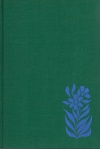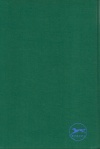In prototypical form, Sagarana first appeared in 1938 as a one thousand-page manuscript, entitled Contos, submitted to the Premio Humberto de Campos fiction contest by a thirty eight year-old João Guimarães Rosa, under the pseudonym Viator. The manuscript took second place, but even with the interest of critics and publishers piqued, no one could find Viator to offer a publishing deal. Eight years would pass before the manuscript, pared down to half the number of pages and reworked by the author, would reappear for publication, this time titled Sagarana.
Luis Hrass, in the most intimate portrait of João Guimarães Rosa written in English, wrote of the great author’s penchant for the letter S. Almost a vertical infinity symbol, and fluid like the rivers of which he so often wrote, the S for Guimarães Rosa was fluid and ideal for capitalization, which is to say initiation. So it is only appropriate that the letter S should begin his first published title and portmanteau.[1]
The word Sagarana, invented by Guimarães Rosa, and composed of two halves, unites two very separate languages, Icelandic and Tupi. The Icelandic saga, a cognate of the English say, refers to what is said/story/tale. –rana, a Tupi suffix, signifying in the manner of/like, can be found, among others, in the Tupi word for cougar: suasuarana: deer-like[2]. Thus: Tale-Like. Though, beyond a mere collection, Sagarana, as deemed by its English translator, Harriet de Onís, is a cycle of stories. A cycle through which the following line echoes in myriad forms: “the story of a little donkey, like the story of a big man, can be told by summing up a single day of his life.[3]” Stephanie Merrim, in her essay Sagarana: A Story System, when she quotes Gregory Lukas: “For the epic, the world at any given moment is an ultimate principal…” We recall the infinite contained within a single symbol.
I’ve read, I can’t find where now, amidst the piles of papers and books I’ve collected over the past year, that Grande Sertão: Veredas exploded the path laid out in Sagarana. From what I’ve read of Sagarana (“The Little Dust-Brown Donkey,” “The Return of the Prodigal Husband,” and “Woodland Witchery”), of course! And I should mention that it was Harriet de Onís who sought out João Guimarães Rosa. She writes about it in the Translator’s Note in Sagarana:
“I feel a great pride in Guimarães Rosa, not only because he is in my opinion one of the most skilled practitioners of the art of the short story in the world today—and I am using authors like Katherine Anne Porter, William Faulkner, and Jorge Luis Borges as my basis for comparison—but also because he was my own discovery. I came upon one of the stories in Sagarana several years ago in an Argentine literary review; the author was unknown to me, the translation left much to be desired, but the story, “Augusto Matraga’s Hour in Turn,” made such a deep impression on me that I immediately ordered the books in the listed bibliography, which included the novel Grande Sertão: Veredas…”
Three sentences later she continues:
“The translation of Sagarana has not been easy. I have been in constant communication with the author, and at times I have felt like a sick-bay steward delivering a baby by radioed instructions from a doctor on land.”[4]
In Portuguese, Sagarana received the Prêmio da Sociadade Felipe d’Oliveira, and was described by Wilson Martins, the same year it was published, as “a book in which one does not encounter the typical and normal flaws of a first work. On the contrary, [he added] if there is any mature and complete work in contemporary Brazilian fiction it is Sagarana!” [5]
In 1967, Harriet de Onis’s English translation won the PEN Club’s Prize for Best Translation.
[1] Hrass, Luis, and Barbara Dohmann. Into the Mainstream: Conversations with Latin American Writers. New York: Harper & Row, 1967 (P. 151).
[2] I believe the likeness to a deer refers to the coloring.
[3] O Burrinho Pedrês in Sagarana. José Olimpio Editora: Rio, 1970 (P. 4). Trans. FM
[4] Sagarana, New York: Knopf, 1966
[5] As quoted in Third World Literary Fortunes, Piers Armstrong. Bucknell Univ Press: 1999 (P.111)








I’m reading this book now! My next post is about it.
visite meu blog!
Bye,
Poliana